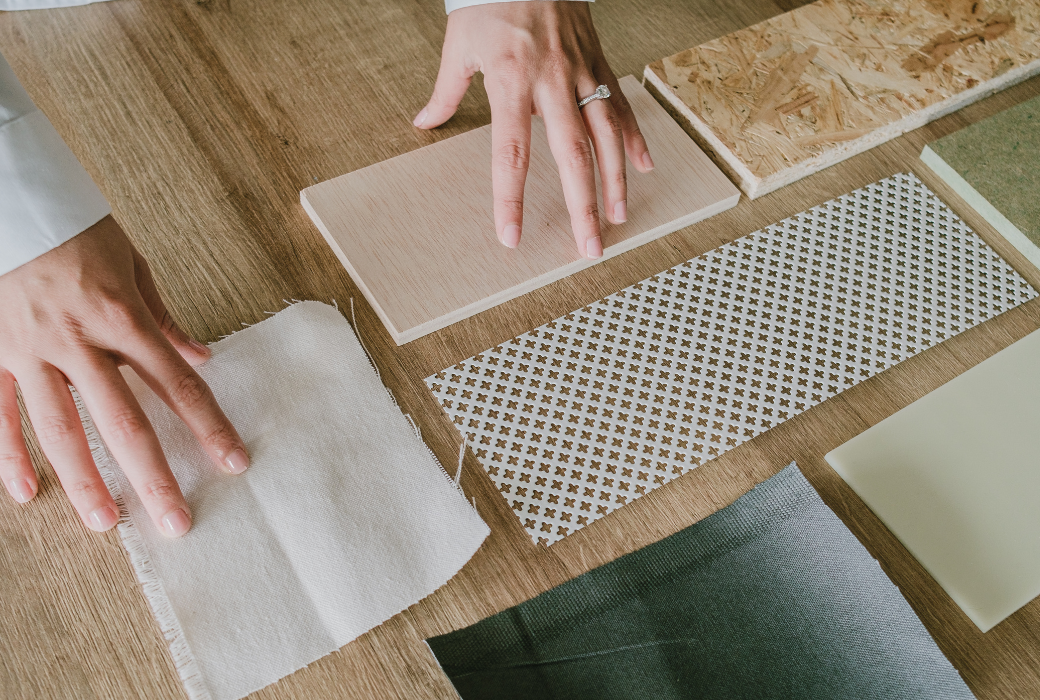

Planning Engaging Content for Your Interior Design Newsletter
Summary
This article provides actionable strategies for creating engaging content for your interior design newsletter. It covers understanding your audience, using compelling visuals, incorporating storytelling, and providing valuable tips and insights. With our tips, you will keep readers interested and looking forward to each newsletter, thereby enhancing customer engagement and loyalty.
Reflection Questions
- What types of content have you found most engaging in the newsletters you subscribe to, and how can you incorporate similar elements into your interior design newsletter?
- How well do you understand your audience’s interests and preferences, and what steps can you take to better tailor your newsletter content to their needs?
- What storytelling techniques can you use to make your interior design projects and tips more relatable and inspiring for your readers?
Journal Prompt
Reflect on a time when you were particularly captivated by a piece of content in a newsletter. What elements made it engaging and memorable for you? Consider how you can apply these elements to your interior design newsletter to enhance reader engagement and connection. Write about specific strategies you plan to implement and how you believe they will impact your readership.
As a firm owner, you keep an eye on design trends, read about the application of new technology in the interior design industry, and attend markets all over the US. You create incredible content for your blog or socials and photograph finished projects to update your online portfolio. Your team is growing, you have found your niche, and you know exactly who your ideal client avatar is. Only one question remains: when and how should you update clients, partners, and friends on your firm’s email list? How do you keep that avatar engaged but not fatigued? Should you send a newsletter each week, month, or quarter? Which content should you include? In this post, we discuss the ins and outs of planning content for your interior design newsletter. From defining your goals and including a CTA in each email to prioritizing consistency and quality over quantity, here’s how to get started. We’ll also list a few email marketing tools you can use to improve the appearance and accessibility of your newsletters. Read on to learn more!
Why Should an Interior Designer Send Out a Newsletter?


If time and budget allow, each interior design business should send out a regular newsletter because it allows them to showcase their expertise, foster client relationships, and establish a strong brand presence. Through the newsletter, interior designers can share their recent projects, design tips, and trends — providing valuable insights that engage and educate subscribers.
To Better Understand Your Target Market
Examining how subscribers interact with this content can help you perform low-cost market research. If you track clicks, open rates, and other forms of engagement, newsletters allow you to discretely gather feedback from your subscribers.
To Build Credibility with Clients and Partners Like Architects or Vendors
By consistently delivering high-quality content, the firm can position itself as a thought leader in the industry — building credibility and trust among both current and potential clients. Newsletters also allow you to announce promotions, upcoming events, and awards for which your firm has been nominated.
To Increase Visibility Online


Plus, newsletters can help increase a firm’s visibility online. Including links to your website, blog, or social media profiles in newsletters can drive traffic and expand your online presence. This can improve your search engine ranking and boost overall visibility.
To Explain Your Approach and Underscore Your Expertise
Furthermore, a newsletter offers yet another platform through which to showcase the firm’s design portfolio — underscoring your expertise, providing examples of ideal projects, and outlining your services to prospective clients. In the competitive world of interior design, a well-crafted newsletter not only keeps subscribers informed but also strengthens the firm’s brand identity — ultimately driving client engagement and business growth.
Our Step-by-Step Guide to Planning Content for Your Interior Design Newsletter
#1 Define Your Goals and Identify Your Audience


Before you select a few blog posts, link out to testimonials, or celebrate partners, start by clarifying the goals of your newsletter. Are you hoping to educate your audience, inspire readers, promote services, or a combination of these? Having clear goals will help shape your content strategy.
Next, you should identify which segment of your email list is the intended audience for each type of content. Who are you hoping to engage when promoting services, releasing educational content, or providing your perspective on design trends? You might go back and forth between defining your goals and identifying the target audience of each newsletter.
If there are clear divisions in your email list, consider sending different newsletters to different segments of your audience. As you might have guessed, this targeted approach is known as segmentation. It involves tailoring your newsletter content to specific groups within your subscriber list based on their preferences, behaviors, demographics, or other characteristics.
Why You Should Segment Your Email List
Different segments of your audience have varying interests and needs. By sending targeted content that aligns with their preferences, you are more likely to capture their attention and provide value. Segmented newsletters allow for a more personalized experience. Addressing subscribers by their interests, location, or past interactions makes them feel understood and valued. When subscribers receive content that resonates with them personally, they are more likely to open and engage with your emails. This often leads to higher open and click-through rates.
Targeted content increases the chances of subscribers taking desired actions, such as making a purchase or signing up for an event. It can also cut down on the number of subscribers who opt-out. Irrelevant content can cause recipients to unsubscribe from your newsletter. Perhaps best of all, segmenting your subscribers can provide valuable insight that can later be leveraged. Segmenting your audience allows for A/B testing of different content and strategies — helping you learn what works best for each group.
In the context of an interior design firm, you might send design tips to one segment, updates on recent projects to another, and information about partnerships to a third segment. Utilizing segmentation in your newsletter means that you understand your audience’s diverse needs and are committed to providing content that matters to them.
#2 Develop a List of Content Themes


Create a list of content themes that align with your brand and audience. Possible themes could include design tips, before-and-after project reveals, your personal feelings about industry trends, client testimonials, studio news, hosting ideas, or sources of inspiration for your team. Incorporate seasonal content — i.e., holiday decorating tips, gift guides, tablescape inspiration, and other lifestyle content — to keep your newsletter timely and relevant.
Remember that not every topic needs an accompanying blog post. As long as each newsletter contains some sort of value-add — like a downloadable checklist, video, or listicle — with a clear CTA and clickable link, you can engage your audience. You can also track that engagement, which is almost as important.
#3 Create an Editorial Calendar
Once you have a list of themes, it’s time to flesh out your content calendar with specific topics. Develop an editorial calendar to plan your content ahead of time. This ensures a consistent flow of relevant content and helps you stay organized.
Creating a content calendar helps you maintain a consistent schedule for sending newsletters — which builds trust and anticipation among your subscribers. Planning ahead allows you to allocate time for content creation, design, and review far in the future — reducing last-minute rushes and stress.
Plus, having more time to brainstorm and generate ideas can lead to more creative and engaging newsletter content. It also helps guide members of your marketing team who are responsible for other forms of content like blog posts and social media. To create the right mix of content for your firm’s blog, check out this post.
#4 Include a Variety of Content


While it’s important to write about a variety of topics on your blog, it’s also essential to include a wide range of media in your newsletters. Diversify your content to keep your readers engaged. Add videos, infographics, interactive PDFs, quizzes, and links to posts on your blog.
#5 Feature Completed Projects to Demonstrate Your Style and Expertise
Feature completed projects to showcase your expertise and outline your firm’s offerings. Before-and-after photos, client testimonials, and explanations of design choices can give readers a deeper understanding of your work. Use these project reveals to illustrate your firm’s process in a digestible way. Don’t forget to celebrate partners and vendors where appropriate!
#6 Reference Trends in the Industry


Many design firms round up trends and publish lists on their blogs, but few express their personal opinions. Expressing your distinct point of view might alienate certain customers or clients, but it might also energize potential clients who feel the same way or respect your honesty.
Fuel your creative fire & be a part of a supportive community that values how you love to live.
subscribe to our newsletter
*please check your Spam folder for the latest DesignDash Magazine issue immediately after subscription


When you take a stance on design trends, give subscribers a chance to share their opinions too. Survey your subscribers with a poll! As this Forbes article notes, “one great way to get people to actively engage with your business is by asking them for their thoughts and opinions.”
Tip: Don’t react solely to aesthetic trends like popular paint colors and tile patterns. Acknowledge emerging technologies like augmented reality or artificial intelligence and consider what they might mean for the industry.
#7 Include a Call to Action (CTA) in Each Email


Next, include clear CTAs in each newsletter – accompanied by appropriate links. These could lead readers to your website or to watch a client testimonial on YouTube. In each email, encourage them to follow you on social media, sign up for a design consultation, or explore your portfolio. However, be sure to avoid stuffing each email with gobs of promotional content.
In this article for Hubspot, Ginny Mineo recommends balancing your newsletter with 90% informational or inspirational content and just “10% promotional” content. Of course, if you are announcing a new service or product line, throw that advice out the window for an email or two. Return to the 90-10 rule once that promotional period is over.
#8 Remember that Consistency is Key
Stick to a regular publishing schedule. Whether it’s weekly, bi-weekly, or monthly, consistency builds anticipation and keeps readers engaged. Consistency and quality are generally more important than frequency, so don’t worry about releasing a newsletter every week if that puts too much pressure on your team.
Plus, sending out email newsletters too frequently can lead to subscriber fatigue and reduced engagement. While regular communication is essential for maintaining a connection with your audience, inundating their inboxes with an excessive number of emails can result in annoyance and eventual disinterest.
Subscribers might feel overwhelmed, leading to a higher likelihood of unsubscribes or even marking your emails as spam. Quality and relevance also suffer when quantity takes precedence, diminishing the value of your content.
Striking the right balance between staying in touch and respecting your subscribers’ inbox space is crucial for nurturing a positive relationship, maintaining high open rates, and ensuring that each communication holds genuine significance for your audience.
#9 Make Sure Each Email is Aesthetically Appealing


Next, you must make sure each email is aesthetically appealing. This newsletter will reflect on your firm — either positively or negatively — so take the same care designing your emails as you would any other project. Beauty and balance perform a function here. Engaging visuals, such as images, graphics, and well-structured layouts, keep readers interested and encourage them to explore your content further.
Not sure how to format your newsletters? Consider using a newsletter template. We love the templates from Flodesk. Remember that each newsletter should be formatted for desktop and mobile, so be sure to check how text boxes, images, and other content appear on both types of devices.
#10 Create a Brand Guide to Keep Color, Font, and Formatting Consistent
One primary goal of sending out a regular newsletter is to continually expose potential clients to your firm’s brand. A consistent visual style in line with your brand’s colors, fonts, and imagery helps reinforce brand recognition and identity. Creating a brand guide and making those guidelines available to all employees — and independent contractors if appropriate — ensures everyone involved in your newsletter stays on-brand at all times.
#11 Track Reader Response to Your Emails


As noted above, newsletters offer insight into your target audience. With the right tools, you can see who opens each email and when. You can monitor who clicks on which links and keep track of which topics receive the most interest from those who subscribe. Pay attention to reader feedback and track analytics to understand what content resonates the most. Be open to editing your content strategy based on how subscribers interact with your emails.
Email Marketing and Content Planning Tools for Interior Designers
Are you ready to share your design ideas, project reveals, and takes on trends with subscribers? Consider one or more of the following email marketing and content planning tools to ensure you have access to the data outlined in Step 11 and the templates we mentioned in Step 9.
- Mailchimp
- Flodesk
- Monday
- Trello
- HubSpot
- Benchmark
- Omnisend
- ActiveCampaign
- ConvertKit








